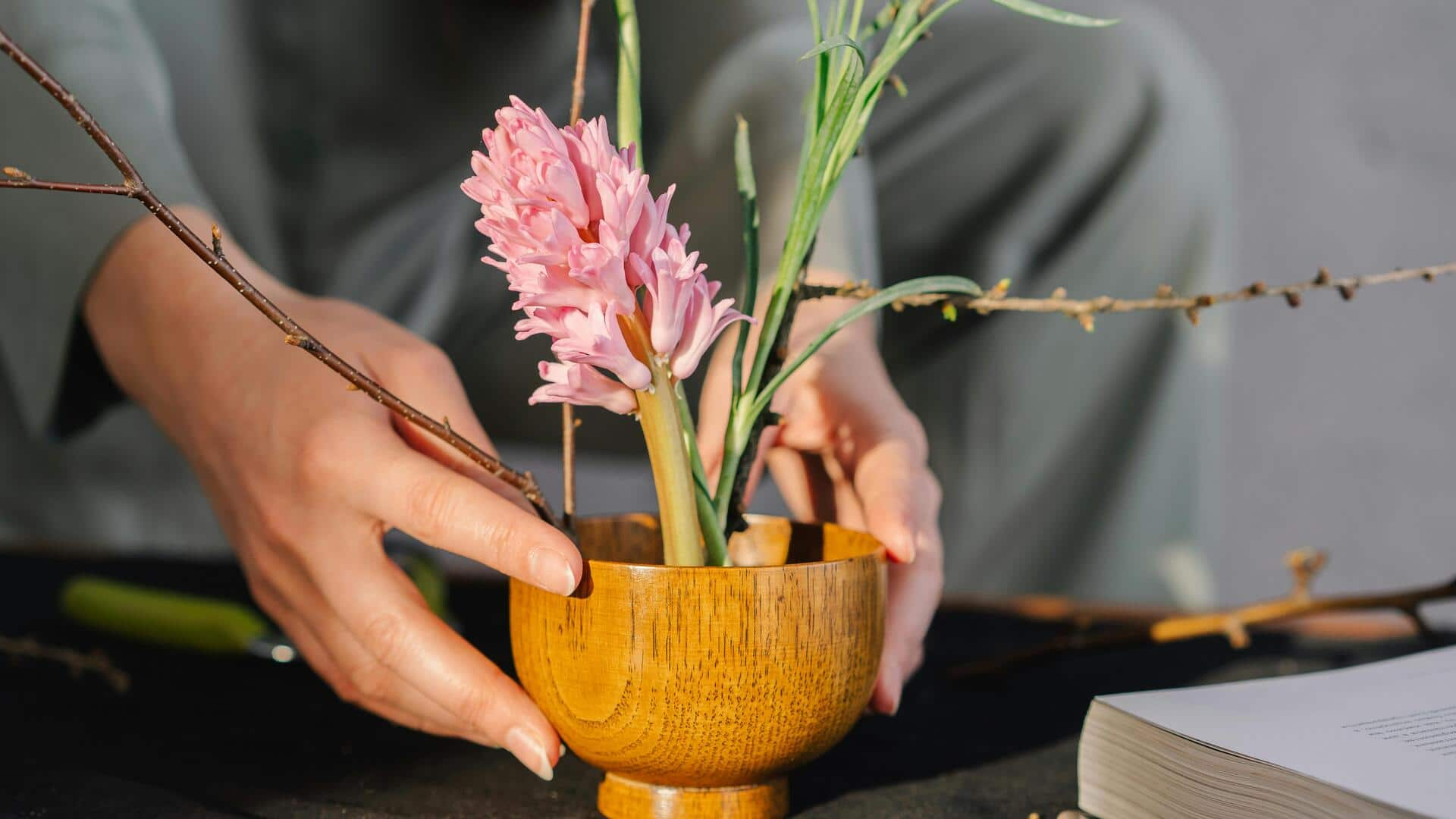
Ikebana: The Japanese art that turns flowers into poetry
What's the story
Ikebana, the Japanese art of flower arrangement, is steeped in history and cultural significance. More than just a decorative activity, it is a spiritual practice that emphasizes harmony, balance, and simplicity. Practiced for centuries, ikebana is not just about arranging flowers but also about expressing emotions and connecting with nature. Here are five timeless elements that define ikebana's unique approach to floral artistry.
#1
Emphasis on line and form
In ikebana, the focus is on line and form. Unlike Western floral arrangements that emphasize volume and color, ikebana focuses on the shape of stems and branches. This element encourages practitioners to pay attention to the natural curves and angles of each element used in the arrangement. By doing so, it creates dynamic compositions that highlight the beauty of each component.
#2
Minimalism as a principle
Minimalism is at the heart of ikebana. The practice encourages the use of fewer materials to create more profound expressions. By limiting the number of elements, practitioners are encouraged to focus on quality over quantity. This principle promotes mindfulness as it encourages individuals to appreciate every single piece used in their arrangement.
#3
Seasonal awareness
Seasonal awareness is key to ikebana practice. Practitioners are encouraged to use materials that are in season, as it emphasizes the natural cycle of life. This element not only promotes sustainability but also encourages a deeper connection with nature's rhythms. By aligning arrangements with seasonal changes, practitioners can create pieces that reflect the current state of the environment.
#4
Asymmetry for balance
Asymmetry is key to achieving balance in ikebana arrangements. Unlike symmetrical designs that may appear more stable, asymmetrical arrangements create tension and interest by contrasting elements placed unevenly within an arrangement space. This technique highlights movement through visual weight distribution without compromising overall harmony.
#5
Use of negative space
Negative space is a key element in ikebana, as it emphasizes the importance of empty spaces in an arrangement. By deliberately leaving some areas bare, practitioners can create a sense of openness and tranquility. This technique not only highlights the beauty of the materials used but also encourages viewers to engage with the arrangement on a deeper level. It invites contemplation and appreciation for both the filled and empty spaces.